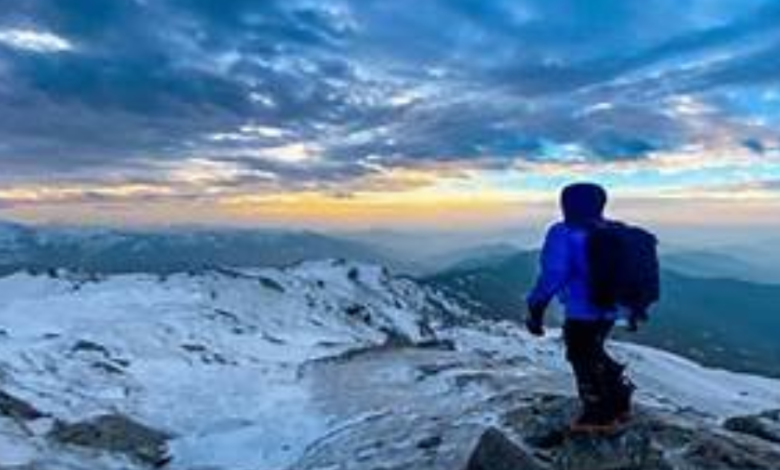Everest Base Camp Trek difficulty level and challenges

The Everest Base Camp Trek is renowned for its breathtaking views and the sense of accomplishment it offers, but it also presents a range of challenges that trekkers must be prepared for. Understanding the trek’s difficulty level and associated challenges is crucial for ensuring a safe and successful journey.
At its core, the difficulty of the Everest Base Camp Trek is influenced by several factors, including altitude, terrain, weather conditions, and physical exertion. The trek reaches altitudes of up to 5,364 meters (17,598 feet) at Everest Base Camp, which poses significant challenges related to altitude sickness. The thin air at high elevations can lead to symptoms such as headaches, dizziness, nausea, and in severe cases, high-altitude pulmonary edema (HAPE) or high-altitude cerebral edema (HACE). Acclimatization is essential to mitigate these risks, involving gradual ascent, rest days, and monitoring of physical condition.
The terrain along the trek is varied and can be demanding. Trekkers encounter a mix of rugged trails, steep ascents, and descents, often traversing rocky paths and crossing suspension bridges over deep gorges. This varied terrain requires physical endurance and stamina, as well as careful footing to navigate safely. The trail is also subject to changing weather conditions, including snow, rain, and strong winds, which can add to the trek’s difficulty. Trekkers must be prepared for these conditions with appropriate gear and clothing to ensure safety and comfort.
Physical fitness is a key factor in managing the trek’s difficulty. While the trek does not require technical climbing skills, it demands a good level of cardiovascular fitness and endurance. Regular training before the trek, including aerobic exercises, strength training, and long hikes, can help prepare the body for the physical demands of the journey. Additionally, maintaining a steady pace and allowing time for acclimatization can significantly impact the overall experience.
Logistical challenges also play a role in the trek’s difficulty. The Everest Base Camp Trek requires careful planning and preparation, including securing necessary permits, arranging transportation, and managing accommodation. The remote nature of the trek means that access to medical facilities and supplies is limited, making it essential for trekkers to be well-prepared and carry a basic first aid kit.
Ultimately, the Everest Base Camp Trek is a demanding but rewarding adventure. The challenges posed by altitude, terrain, weather, and physical exertion require careful preparation and respect for the environment. By understanding and addressing these challenges, trekkers can successfully navigate the trek and fully appreciate the stunning landscapes and sense of achievement that comes with reaching Everest Base Camp.
Introduction to Trek Difficulty
The Everest Base Camp Trek is a world-renowned adventure that attracts trekkers from across the globe with its promise of breathtaking vistas and the challenge of reaching the base of the world’s highest peak. However, the trek’s difficulty level is often underestimated by those lured by the allure of Everest. Understanding the trek’s difficulty is essential for preparation and safety, as it encompasses various aspects including physical endurance, acclimatization to high altitudes, and navigating challenging terrain.
The trek’s difficulty arises from several key factors. The high-altitude environment poses significant risks, as the oxygen levels decrease sharply, making each step more laborious and increasing the chances of altitude sickness. Additionally, the trek involves significant physical exertion, with long days of walking over rugged terrain, including steep ascents and descents. Weather conditions can also complicate the trek, with the possibility of snow, rain, and extreme cold impacting the trail and trekkers’ comfort.
Preparation for the trek involves understanding these difficulties and taking proactive steps to mitigate them. This includes physical training, acclimatization strategies, and proper gear and equipment. By recognizing the challenges and preparing accordingly, trekkers can enhance their chances of a successful and enjoyable journey to Everest Base Camp.
Overview of Trekking Routes
The Short Everest Base Camp Trek offers multiple routes, each with unique features and challenges. The most popular route starts from Lukla, following the traditional path through the Khumbu Valley. This route provides a classic trekking experience with gradual elevation gain and opportunities to acclimate while passing through key villages like Namche Bazaar, Tengboche, and Dingboche.
Another route, the Gokyo Lakes Trek, is an alternative that includes a detour to the picturesque Gokyo Lakes before joining the Everest Base Camp trail at Lobuche. This route is favored by those seeking a less crowded experience and additional scenic beauty, including views of the serene lakes and the impressive Gokyo Ri summit.
For a more immersive experience, some trekkers choose to combine the Everest Base Camp Trek with a trek to the remote areas of the upper Khumbu Valley, such as the Everest Three Passes Trek. This challenging route involves crossing high-altitude passes like Kongma La, Cho La, and Renjo La, offering panoramic views and a sense of accomplishment.
Each route offers its own set of challenges and rewards, and the choice depends on trekkers’ preferences, fitness levels, and time constraints. Understanding the characteristics of different routes helps trekkers make an informed decision based on their goals and abilities.
Physical Fitness Requirements
Embarking on the Everest Base Camp Trek requires a considerable level of physical fitness due to the trek’s demanding nature. The trek involves walking long distances each day, often on uneven and steep terrain, which necessitates a high level of cardiovascular endurance, leg strength, and overall stamina.
To prepare for the trek, it is crucial to engage in a comprehensive training regimen well in advance. Cardiovascular exercises such as running, cycling, and swimming help build the endurance needed for the long trekking days. Strength training, focusing on the legs, core, and upper body, is equally important to handle the physical challenges of the trek. Exercises such as squats, lunges, and step-ups simulate the physical demands of ascending and descending steep trails.
Additionally, incorporating long hikes into the training routine is beneficial. Trekking on varied terrain and at inclines similar to those encountered on the Everest Base Camp Trek helps simulate the conditions trekkers will face. It is also advisable to carry a weighted backpack during training to mimic the load of trekking gear.
A well-rounded fitness plan not only prepares the body for the physical demands of the trek but also enhances overall resilience and reduces the risk of injuries. Adequate rest and recovery are important components of training, ensuring that the body is well-prepared for the strenuous days ahead.
Altitude Challenges
Altitude presents one of the most significant challenges of the Everest Base Camp Trek. As trekkers ascend to higher elevations, the atmospheric pressure decreases, leading to reduced oxygen levels. This can lead to altitude sickness, which can range from mild symptoms like headaches and nausea to severe conditions such as high-altitude pulmonary edema (HAPE) and high-altitude cerebral edema (HACE).
Altitude sickness occurs because the body struggles to adapt to the lower oxygen levels at high elevations. To mitigate this risk, gradual acclimatization is essential. Trekkers should follow a slow ascent schedule, with planned acclimatization days at key points such as Namche Bazaar and Dingboche. This allows the body time to adjust and produce more red blood cells, enhancing oxygen transport.
Staying hydrated, eating a balanced diet, and avoiding overexertion are also critical for managing altitude challenges. Proper hydration helps maintain bodily functions and reduces symptoms of altitude sickness. Eating foods rich in carbohydrates can provide the necessary energy for the trek and aid in acclimatization.
Monitoring physical condition regularly and being prepared to descend if symptoms of altitude sickness worsen is crucial. Carrying medications like acetazolamide, which can help prevent altitude sickness, may be beneficial for some trekkers, but should be used under medical advice.
Overall, understanding and managing the challenges associated with altitude are key to ensuring a successful and enjoyable trek to Everest Base Camp.
Weather Conditions
Weather conditions on the Everest Base Camp Trek can significantly impact the trekking experience, presenting both challenges and rewards. The trek takes place in a high-altitude environment where weather can be highly variable and unpredictable.
During the trekking season, which generally spans from late spring (April to May) and autumn (late September to October), weather conditions can still be quite extreme. Temperatures can drop drastically, particularly at higher altitudes, reaching as low as -10°C (14°F) or lower. Snow and rain are common, and trekkers should be prepared for these conditions. The risk of snowfall increases as the trek progresses, particularly in the higher reaches of the trail, which can make trails slippery and challenging.
Clear skies and sunny days are more frequent during the trekking seasons, offering breathtaking views of the Himalayan peaks and surrounding landscapes. However, trekkers should be prepared for sudden changes in weather, including strong winds and potential storms. Proper gear, including insulated clothing, waterproof jackets, and durable boots, is essential to stay warm and dry.
Weather conditions can also affect the trekking itinerary. Heavy snowfall or storms can lead to trail closures or delays, impacting the trek’s progress. Flexibility in the schedule and the ability to adapt to changing conditions are important for managing these challenges.
Overall, being prepared for a range of weather conditions and understanding their potential impact on the trek can help ensure a safer and more enjoyable Everest Base Camp experience.
Terrain and Trail Conditions
The terrain and trail conditions on the Mount Everest Base Camp Trek are integral aspects of the trek’s difficulty and overall experience. The trail is renowned for its rugged and diverse terrain, which varies significantly from day to day, presenting both challenges and spectacular vistas.
Initially, trekkers encounter well-trodden paths from Lukla to Namche Bazaar. These sections are relatively moderate but include steep ascents and descents through lush forests and river valleys. As the trek progresses, the terrain becomes more demanding. The trail from Namche Bazaar to Tengboche features steep, rocky paths and several narrow sections, requiring careful footing. The path is often exposed, with dramatic drops on one side and occasional landslides due to heavy rains or snowfall.
Beyond Tengboche, the trail becomes progressively more rugged. The section from Dingboche to Lobuche involves trekking through barren landscapes with loose rocks and moraines. Trekkers face a significant challenge as the terrain becomes increasingly harsh, with cold winds and unstable ground. From Lobuche to Everest Base Camp, the trail crosses the Khumbu Glacier, which is characterized by ice formations and rocky outcrops, demanding cautious navigation.
Trekkers must be prepared for varying trail conditions, including icy patches, loose gravel, and steep slopes. Proper footwear with good ankle support and grip is crucial for handling the uneven terrain and ensuring safety.
Technical Skills Required
While the Everest Base Camp Trek does not require advanced technical climbing skills, trekkers should possess basic mountaineering knowledge and physical readiness to handle the trek’s demands. The trek primarily involves hiking, but there are sections that require careful navigation and awareness of potential hazards.
Basic technical skills include the ability to manage steep ascents and descents, cross suspension bridges, and handle varying trail conditions. Trekkers should be adept at using trekking poles, which provide stability and support on uneven terrain. In some sections, particularly around the Khumbu Glacier, trekkers may need to navigate through icy or rocky areas, requiring a steady foot and cautious movement.
For those choosing more challenging routes, such as the Everest Three Passes Trek, additional technical skills might be necessary. This route involves crossing high-altitude passes, such as Kongma La and Cho La, which may require basic glacier travel skills and familiarity with using crampons and ice axes.
Overall, while advanced technical skills are not mandatory, having a basic understanding of mountain travel and being comfortable with hiking in diverse conditions are essential for a safe and successful trek to Everest Base Camp.
Duration and Distance
The EBC Trek typically spans around 12 to 14 days, covering a distance of approximately 130 to 150 kilometers (80 to 93 miles) round trip. The trek is divided into several stages, each involving varying distances and challenges, and the duration allows for adequate acclimatization and exploration.
The trek usually begins with a flight from Kathmandu to Lukla, followed by a trek to Phakding on the first day. From Phakding, trekkers proceed to Namche Bazaar, where an acclimatization day is scheduled to adjust to the altitude. The journey continues from Namche to Tengboche, Dingboche, and eventually to Lobuche and Everest Base Camp.
The final stages include trekking from Everest Base Camp to Gorak Shep, with a day hike to Kala Patthar for panoramic views of Everest and the surrounding peaks. Trekkers then descend back to Pheriche, Namche Bazaar, and Lukla before returning to Kathmandu.
Daily distances vary, with some days involving more strenuous hikes than others. Trekkers should be prepared for long days of walking, often ranging from 4 to 8 hours, depending on the terrain and altitude. The itinerary is designed to balance trekking days with acclimatization and rest, ensuring that trekkers can adapt to the high altitude and manage the physical demands of the trek.
Daily Itinerary Challenges
Each day of the Everest Base Camp Trek presents its own set of challenges, requiring careful planning and adaptation to varying conditions. The daily itinerary is designed to accommodate these challenges and ensure a balanced trek.
The trek begins with a relatively short hike from Lukla to Phakding, easing trekkers into the journey. The next significant challenge arises on the ascent to Namche Bazaar, which involves a steep climb through forested trails. Namche Bazaar, situated at 3,440 meters (11,286 feet), serves as an acclimatization point, allowing trekkers to adjust to the altitude.
As the trek progresses, the daily hikes become longer and more demanding. The trek from Namche Bazaar to Tengboche involves a mix of steep ascents and descents, with the challenge of crossing suspension bridges over deep gorges. The journey to Dingboche includes another acclimatization day to help trekkers adjust to higher elevations, while the hike to Lobuche presents a more exposed and rugged trail.
Reaching Everest Base Camp involves a challenging trek across the Khumbu Glacier, with uneven terrain and ice formations requiring careful navigation. The final stretch to Gorak Shep and the hike to Kala Patthar offer high-altitude challenges, with steep ascents and thin air.
Descending back to Lukla involves retracing the steps, often with increased fatigue and potential weather-related delays. Each day’s challenges, including altitude changes, weather conditions, and terrain variations, require trekkers to be well-prepared and adaptable.
Health and Safety Concerns
Health and safety are paramount on the Everest Base Camp Trek, given the trek’s high-altitude environment and challenging conditions. Trekkers must be vigilant about their health and take proactive measures to ensure a safe and enjoyable experience.
Altitude sickness is a significant concern, with symptoms ranging from mild headaches and dizziness to severe conditions like high-altitude pulmonary edema (HAPE) and high-altitude cerebral edema (HACE). To mitigate these risks, trekkers should follow a gradual ascent plan, including acclimatization days at key points such as Namche Bazaar and Dingboche. Recognizing early symptoms and responding promptly is crucial for preventing serious altitude-related health issues.
Physical fitness is also important for managing the trek’s demands. Trekkers should be in good cardiovascular condition and have strength and stamina to handle long days of trekking and varied terrain. Training before the trek, including aerobic exercise and long hikes, can enhance overall fitness and reduce the risk of injuries.
Health concerns extend beyond altitude sickness. Trekkers should be cautious of gastrointestinal issues, dehydration, and exposure-related conditions such as frostbite and hypothermia. Carrying a well-stocked first aid kit, including medications for altitude sickness, basic medical supplies, and personal prescriptions, is essential.
Lastly, the presence of experienced guides and porters can significantly enhance safety. Guides are trained to manage altitude sickness and respond to emergencies, while porters assist with carrying gear and provide additional support. By adhering to safety protocols, being aware of health risks, and preparing adequately, trekkers can enjoy a safer and more rewarding Everest Base Camp experience.
Logistic Challenges
The Everest Base Camp Trek presents several logistic challenges that can impact the overall experience. One of the primary logistical hurdles is organizing permits and paperwork. Trekkers need to secure a TIMS (Trekkers’ Information Management System) card and a Sagarmatha National Park entry permit, both of which are essential for legal trekking in the region. These permits require advance application and can be arranged through trekking agencies or directly in Kathmandu.
Transportation logistics also play a critical role. The trek begins with a flight from Kathmandu to Lukla, which can be subject to delays or cancellations due to weather conditions. The flight is notoriously unpredictable, and having contingency plans or flexible travel dates is advisable. Once in Lukla, transportation of gear and supplies to the trekking route is handled by porters, but coordinating these logistics involves careful planning to ensure that all equipment arrives on time and in good condition.
Accommodation along the trek is another logistical aspect to manage. While teahouses provide basic lodging, availability can be an issue during peak trekking seasons. It’s important to book accommodations in advance, particularly if trekking during high season, to ensure a place to stay each night. Trekkers should also be prepared for limited amenities and varying levels of comfort, which can affect the overall trekking experience.
Psychological Challenges
Trekking to Everest Base Camp involves not only physical but also psychological challenges. The mental strain of a high-altitude trek can be substantial, as trekkers face long days of trekking, physical exhaustion, and the constant pressure of adapting to the harsh environment.
One significant psychological challenge is managing the sense of isolation and the mental fatigue that accompanies extended periods in remote areas. The trek’s high-altitude environment and the physical demands can lead to feelings of frustration and anxiety. Trekkers might also experience homesickness, particularly when they face difficulties or delays.
Acclimatization, though crucial for physical health, can be mentally taxing as well. The slow pace and frequent rest days necessary for acclimatization can test trekkers’ patience and resolve. Mental resilience becomes crucial, as maintaining a positive attitude and managing stress can greatly impact the trek’s success and enjoyment.
Mental preparation before the trek is essential. Trekkers should mentally prepare for the physical and emotional demands of the journey, set realistic expectations, and develop strategies to cope with potential challenges. Having a supportive trekking group or guide can also provide encouragement and help manage psychological stress during the trek.
Gear and Equipment Needs
Proper gear and equipment are critical for a successful Everest Base Camp Trek, given the trek’s challenging conditions and varying weather. The right gear not only enhances comfort but also ensures safety in the rugged high-altitude environment.
Footwear is of utmost importance. Trekking boots with good ankle support, grip, and insulation are essential for navigating the uneven and sometimes icy terrain. It’s also wise to bring gaiters to prevent debris and snow from entering the boots.
Clothing layers are crucial for adapting to the variable temperatures. Base layers made of moisture-wicking materials, insulation layers like fleece or down jackets, and a durable outer shell to protect against wind and rain are necessary. Additionally, high-altitude conditions require gloves, hats, and scarves to protect against the cold.
A well-equipped backpack should include essential items such as a sleeping bag rated for low temperatures, a sleeping pad for insulation and comfort, and a reliable trekking pole for stability. Hydration systems and a water purification method are also important, as clean water sources are limited.
For those trekking in winter or facing extreme conditions, additional gear like crampons and ice axes might be required. Renting specialized gear in Kathmandu can be a practical option for trekkers.
Personal Experience and Insights
Personal experiences of trekking to Everest Base Camp often highlight the journey’s transformative nature. Many trekkers describe the trek as a life-changing adventure that tests their physical and mental limits while offering unparalleled views of the Himalayas and a profound sense of achievement.
Trekkers often share that the initial days of the trek can be physically challenging but are rewarded with stunning scenery and the camaraderie of fellow trekkers. The experience of walking through traditional Sherpa villages, crossing suspension bridges, and witnessing the sunrise over Everest from Kala Patthar are frequently cited as highlights.
Acclimatization days, though essential for health, can be a mix of boredom and relief. Trekkers use these days to explore nearby areas, such as the village of Namche Bazaar, or simply rest and recover. These experiences provide an opportunity to absorb the local culture and appreciate the serene beauty of the Himalayas.
The sense of accomplishment upon reaching Everest Base Camp is often described as overwhelming. The final approach, with views of Everest and the surrounding peaks, provides a rewarding climax to the trek. The personal insights gained from overcoming the trek’s challenges, combined with the profound beauty of the environment, contribute to a deeply fulfilling experience.
Conclusion on Trek Difficulty
The Everest Base Camp Trek presents a range of challenges that combine to create a demanding but rewarding adventure. From the logistical hurdles of permits and transportation to the psychological and physical demands of high-altitude trekking, the trek requires careful preparation and resilience.
Understanding the difficulty level of the trek involves recognizing the challenges posed by the terrain, weather conditions, and altitude. Trekkers must be prepared for rugged trails, variable weather, and the need for physical endurance. Acclimatization and mental fortitude play crucial roles in managing these challenges and ensuring a successful journey.
Proper gear and equipment are essential for navigating the trek’s conditions safely and comfortably. Personal experiences often reflect the trek’s transformative nature, highlighting both the difficulties and the profound rewards of reaching Everest Base Camp.
In conclusion, while the Everest Base Camp Trek is undoubtedly challenging, the sense of accomplishment, stunning views, and personal growth make it a highly sought-after adventure. With adequate preparation, a positive mindset, and a readiness to tackle the trek’s difficulties, trekkers can look forward to a memorable and fulfilling experience.
Stay informed by visiting our site for the latest news and updates: Usa Tech Magazine!



